From Peru’s Machu Picchu to India’s Taj Mahal to Australia’s Great Barrier Reef, Unesco World Heritage sites tell the stories and histories of cultures and communities. To date, there are 1,121 sites—869 cultural, 213 natural and 39 mixed. But a heritage cannot be captured in buildings and monuments and landscapes alone.
As a result of a conference in 2000 in Washington, D.C. in association with the Smithsonian Institution, Unesco established its List of Intangible Cultural Heritage to promote and help preserve traditions and living expressions passed down through generations. Ninety so-called “elements”—from the Ugandan craft of barkcloth-making to Vedic chanting in India to dramatic practices like Sicilian puppet theater and Kabuki theater—were inscribed to the inaugural list in 2008. The most recent session took place in December, and the 29 new inscriptions, including Singapore’s hawker culture and culinary traditions, Finland’s sauna culture and the practice of conserving wooden architecture in Japan, brought the total up to 584, with 131 countries represented.
For an element to be inscribed on the list, it must be nominated by its own country. In an extensive application process, the country’s cultural agency explains how the tradition is “intangible” and demonstrates that the practitioners and their communities were involved in the process. The country must also show an “inventory” that the practicing community has created; this documentation helps in developing educational materials and safeguarding measures. Countries may also apply for inscription on the List of Intangible Heritage in Need of Urgent Safeguarding, which grants funding for preservation efforts. In this case, the country must explain how the tradition is at risk of disappearing—a peril if younger generations move away from their communities—and what’s being done to protect the heritage.
“This living heritage is fragile, and we run the risk of losing some of the oldest and most distinct traditions around the world, in the face of growing globalization and standardization of our ways of lives,” Ernesto Ottone, Unesco Assistant Director General, says in an email. “We must join forces to avoid losing a wealth of knowledge and skills that are vital for dignity, social cohesion, but also to tackle modern challenges of climate change and social transformation.”
While day-to-day life of the past year-plus has curtailed the ways we learn about distant people and places, exploring the list can give us a sense of the many to experience and discover when travel rebounds. These ten traditions have me dreaming of future trips.
Camel racing, United Arab Emirates and Oman
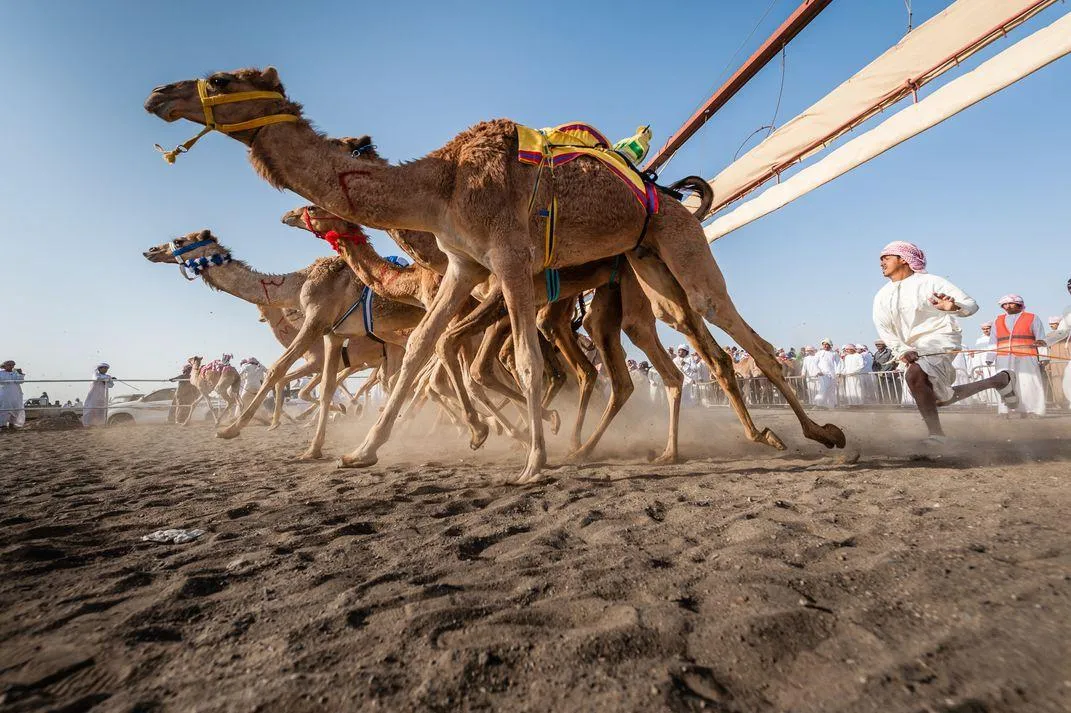
In Arabian culture, camels have long been prized as glorious creatures. Like thoroughbreds in Kentucky, camels in the United Arab Emirates are bred and trained for years to compete in races, a tradition that has been traced to the seventh century and remains a cornerstone of Bedouin societies. Historically, races took place to celebrate holidays and festive occasions, like weddings, but in recent years, enthusiasm has moved to cities, where the animals race on designated tracks or on dirt paths laid down on highways. (On race days, owners and fans drive alongside the track to follow the animals.) Traditionally, men train the camels and women make equipment, like saddles and reins, and tend to the animals’ general care. Young racers and breeders learn the skills and know-how from the elders.
Shrimp fishing on horseback, Belgium
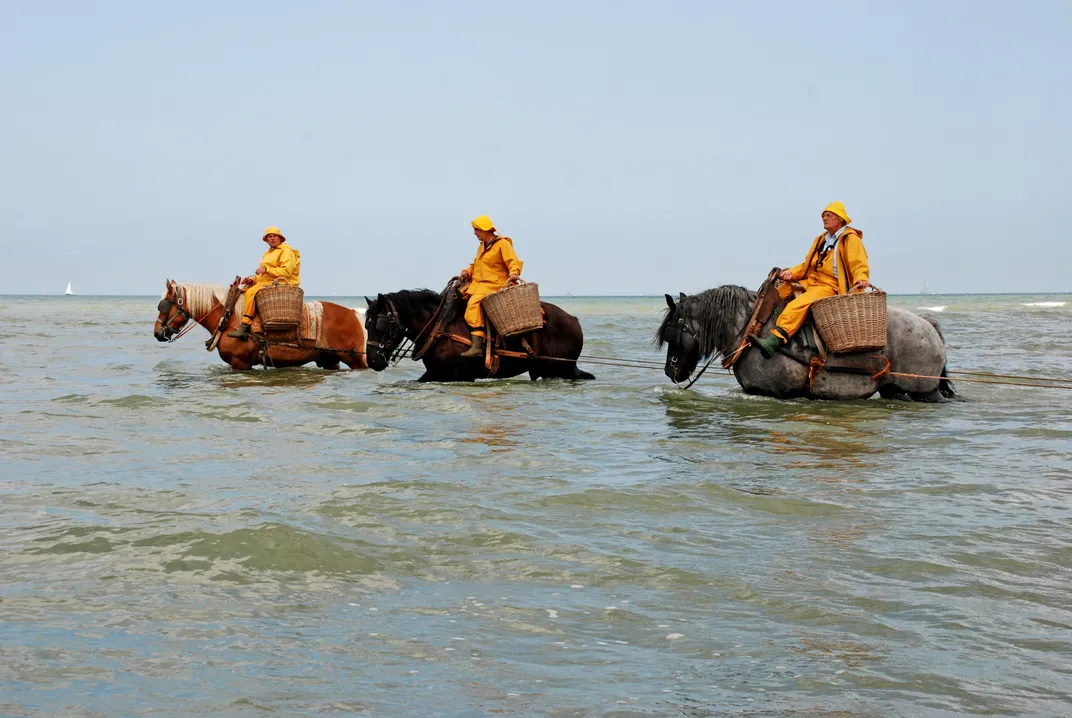
Oostduinkerke is an old fishing village turned resort town on the southwest coast of Belgium, about 30 miles west of Bruges. Its shallow, gently sloping coastline provides the perfect landscape for shrimp fishing on horseback, an old-world style of harvesting the local grey shrimp. These days it’s performed by a small, devoted community of practitioners, most of whose fathers and grandfathers taught them the skill. The farmer-fishermen breed mighty Brabant draft horses and take them to the sea twice a week. They guide the animals breast-deep in the water as they pull nets slightly off the ocean floor behind them, unlike modern trawling equipment that disturbs the shrimps’ habitat. The practice requires a deep knowledge of the beach and the tide. The tradition has become a tourist draw. You can see the horses tackle the water June through September this year. The two-day Shrimp Festival is scheduled for this July, but may be canceled based on the Covid situation. The spoils of the fishermen’s—and horses’—work are a local delicacy on hand in restaurants in the surrounding area.
Human Towers, Spain
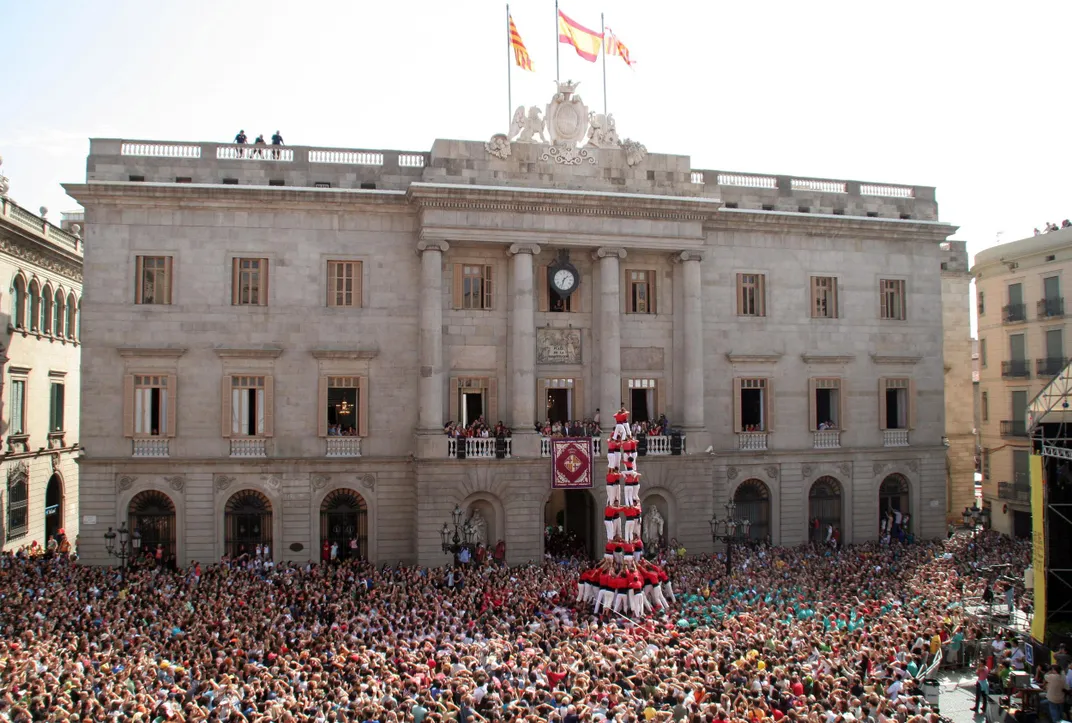
There are athletes, and then there are castellers. Strength, balance, endurance, agility and acrobatic abilities are just a few of the skills required to be a part of a castell, or human tower. The daredevil-caliber tradition has been a highlight of outdoor festivities throughout Catalan, Spain, since 1801. The feat involves a group of men and women—adults and children—who form a living pylon by standing on each other’s’ shoulders. Burly strongmen typically form the base and small, nimble children comprise the highest levels, which can reach as high as ten or eleven “stages.” A boisterous crowd cheers them on and even congregates around the base for added support. Castells are a symbol of teamwork and unity. The tradition, a cornerstone of Catalan culture, was practiced less and less during the economic crisis of the early 20th century and then Franco’s dictatorship (1930 to 1975), but the re-institution of democracy brought a return to street life and festivals, and towers were raised again. In modern times, curious spectators come from around the world to witness the phenomenon at patron saint celebrations in small towns, but the premier, most epic event is a competition that takes place each October in an arena in Tarragona, 60 miles southwest of Barcelona. It’s canceled this year because of Covid, but plans are to resume in 2022.
Yeondeunghoe, lantern lighting festival, Republic of Korea
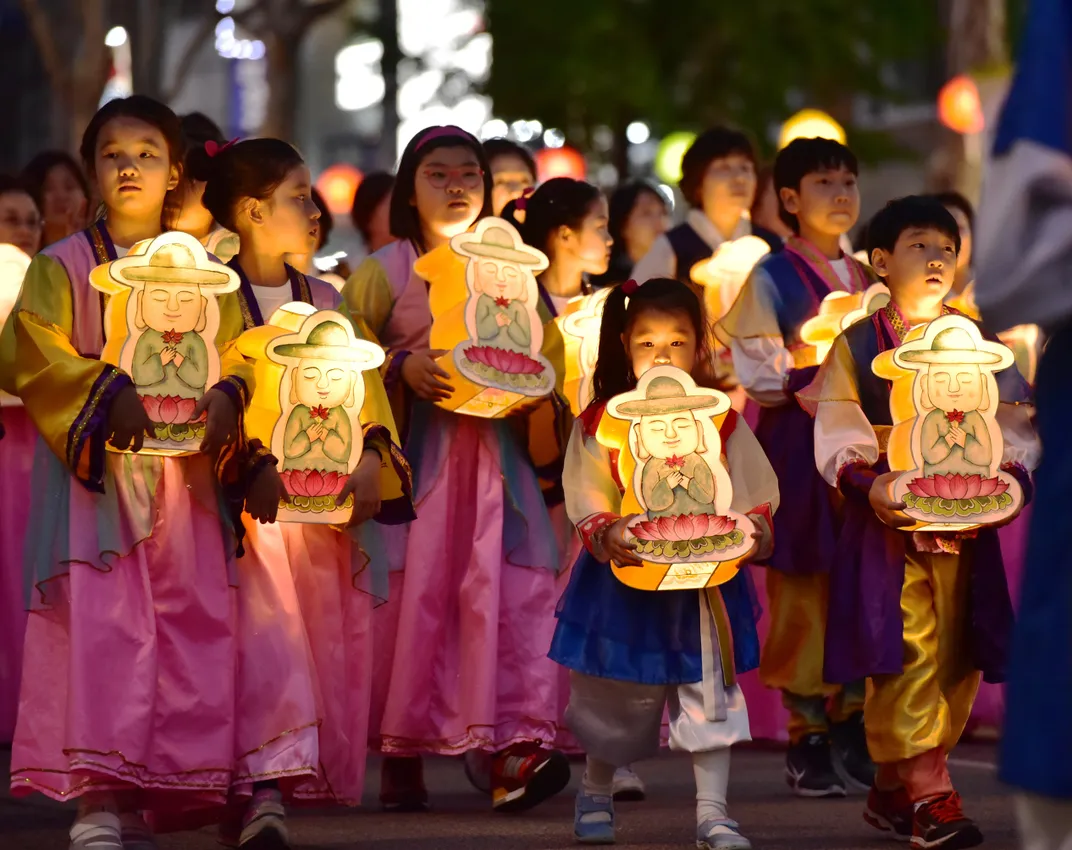
In Buddhist philosophy, the light of wisdom has the capacity to expel darkness and human ignorance. That belief is the driving force of Yeondeunghoe, the Korean celebration of the Buddha’s birthday. On the eighth day of the fourth lunar month—sometime between late April and mid-May by the Roman calendar—a theatrical procession takes place in cities and towns. This year the celebration will take place from May 14 to May 16. People carrying handmade lanterns, often made during family gatherings, march alongside grand, intricately crafted floats. The festival begins serenely with the traditional bathing of an image of Shakyamuni, the Buddha, and culminates in boisterous community events, such as dance parties in stadiums that have the vibe of a family-friendly rave. Where once it was a religious ritual, now it’s a draw for tourism. The Seoul festivities draw tens of thousands of visitors, but celebrations around the country collectively lure even more.
Grass mowing competition, Bosnia and Herzegovina
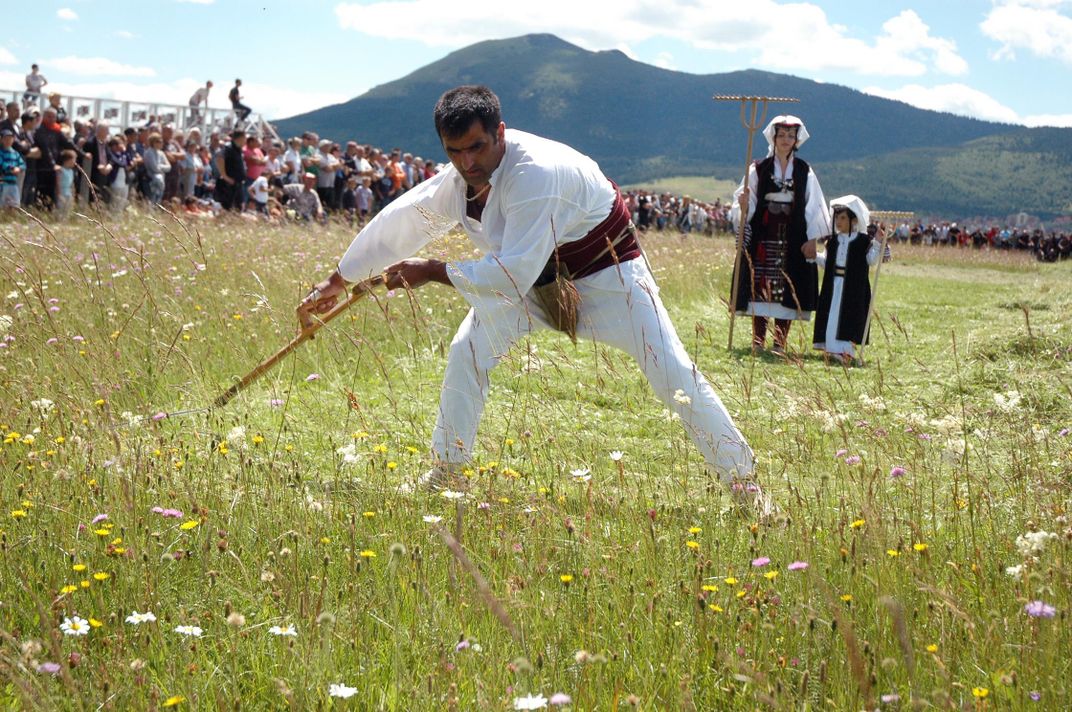
Kupres is a municipality (population under 3,000) in western central Bosnia-Herzegovina, about 90 miles west of Sarajevo. Each July, people gather to watch what might be the only competition in the world that doubles as functional landscaping. Men wearing traditional dress take to Strljanica, a meadow, with handmade scythes. Winners are determined by the time, effort and amount of grass they mow. To win is to become a “chief mower” and to join an exclusive line of champions that stretches back generations. The grass mowing competition traces its roots back 200 years, though some say it’s much older. It evolved from a necessity—locals traveling the mountainous region during the spring months had to cut down grass to be stored to feed the prized cattle through the punishing winter. Mastering the grass-cutting skill is only part of scoring well. Participants must be as adept with specialized maintenance tools as they are with the scythes, which often require sharpening or repairs during the contest. The competition takes place amid a festival-like atmosphere, featuring animal shows, crafts, song and dance.
Ritual and festive expressions of the Congo culture, Panama
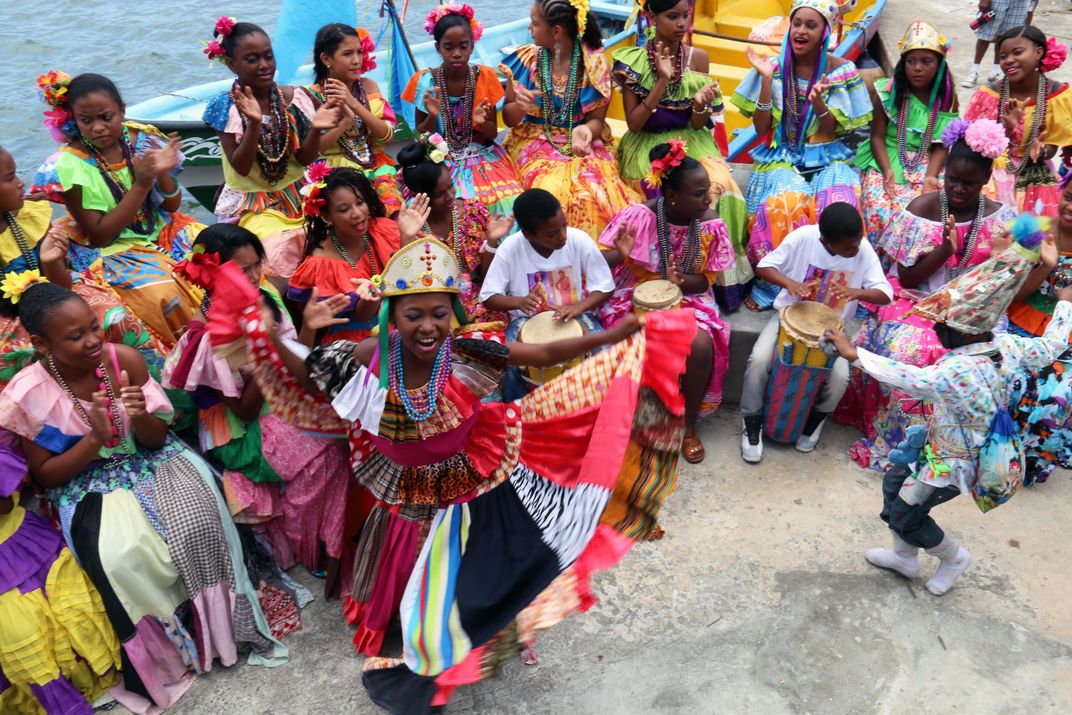
January 20 through Ash Wednesday, in April, is Congo season in Panama. During the festive stretch of time, descendants of slaves brought from Africa to Panama in colonial times commemorate their heritage and celebrate their freedom. Seasonal rituals include singing and barefoot dancing, a means of connecting with the earth. Many of the dances, passed down through oral traditions, are enactments of traditional stories. The women in the community celebrate by wearing colorful dresses that evoke the time when they were slaves during Panama’s colonial period, from 1538 to 1821, and had to sneak their masters’ clothing for lack of other garments. The season culminates on Ash Wednesday, when, in coastal cities, like Portobelo, a dramatic communal performance portrays the matriarch community defeating a costumed devil with an ebullient baptism, a symbol of their freedom.
Festivity of Las Parrandas, Cuba

Keeping up with the neighbors is both an art and a sport in Cuba. The Festivity of Las Parrandas has been an annual extravaganza there since 1820. As legend has it, a priest in Remedios, discouraged by a lack of attendance at mass in the week before Christmas, told children to go outside and make noise with horns and cans and maracas and anything else. The commotion would wake people up and draw them to the church. Over time, that evolved into street parties where bands would compete. Like Mardi Gras transplanted to the Caribbean, communities spend months designing elaborate floats and costumes for an extravagant parade. Painters, carpenters, sculptors, tailors and electricians are among the numbers of artists and craftspeople who collaborate to create the spectacle. Unlike Mardi Gras, though, this is a competition. Neighborhoods in participating towns are divided into two “parties” that work to outdo each other with wondrous displays, and people of all ages, races, classes and religions get involved and collaborate. Once celebrated in 40 towns throughout central Cuba, now only 18 take part. Remedios’ festivities remain the standard-bearer, but other cities like Camajuani, Vueltas and Guayos put on spectacles that are worth a trip. Specific techniques of making the floats, costumes and decorations are passed down through the generations. Over time, modern flourishes have been incorporated, whether through fashion sensibilities or music, ensuring that tradition is upheld, but the event stays engaging and new, too.
Circular breathing of Limbe performances, Mongolia
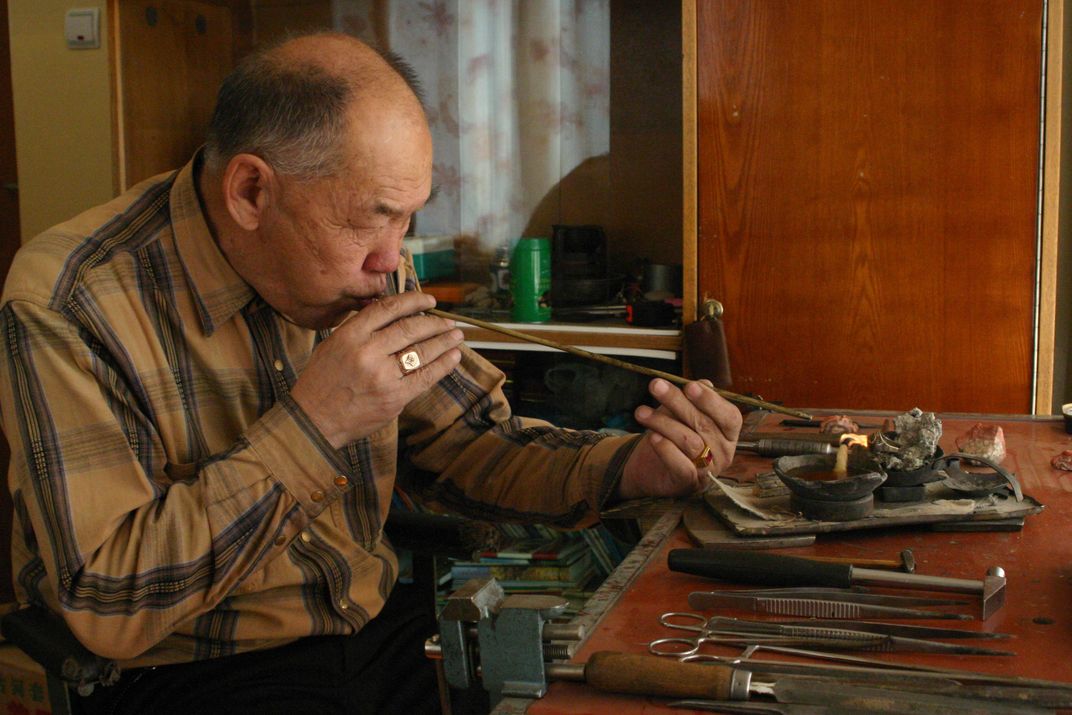
Jazz greats from Sonny Rollins to Wynton Marsalis are known for their ability to hold a note on their saxophone and trumpet, respectively, for minutes at a time. Satchmo could do it, too. But centuries before American audiences listened in astonishment to what seems like a super-human feat, musicians in Mongolia were playing single notes on limbes, or flutes made of wood or bamboo, for long stretches without a pause. It’s the mark of one who’s mastered circular breathing, a practice of simultaneously inhaling through the nose and exhaling through the mouth. In the 13th century, the country’s metalsmiths first developed the technique to make decorative objects. They’d continuously blow on a pipe blowing into a flame to soften the metal. Limbe performances are a combination of musical skill and physical endurance that takes extensive training. Young students spend years training with older generations. Concerts do not typically take place at high-profile venues because there are currently so few practicing musicians. Visitors are encouraged to check in with the Mongolian Palace for Youth, in Ulaanbaatar, about performances.
Wine Horses, Spain
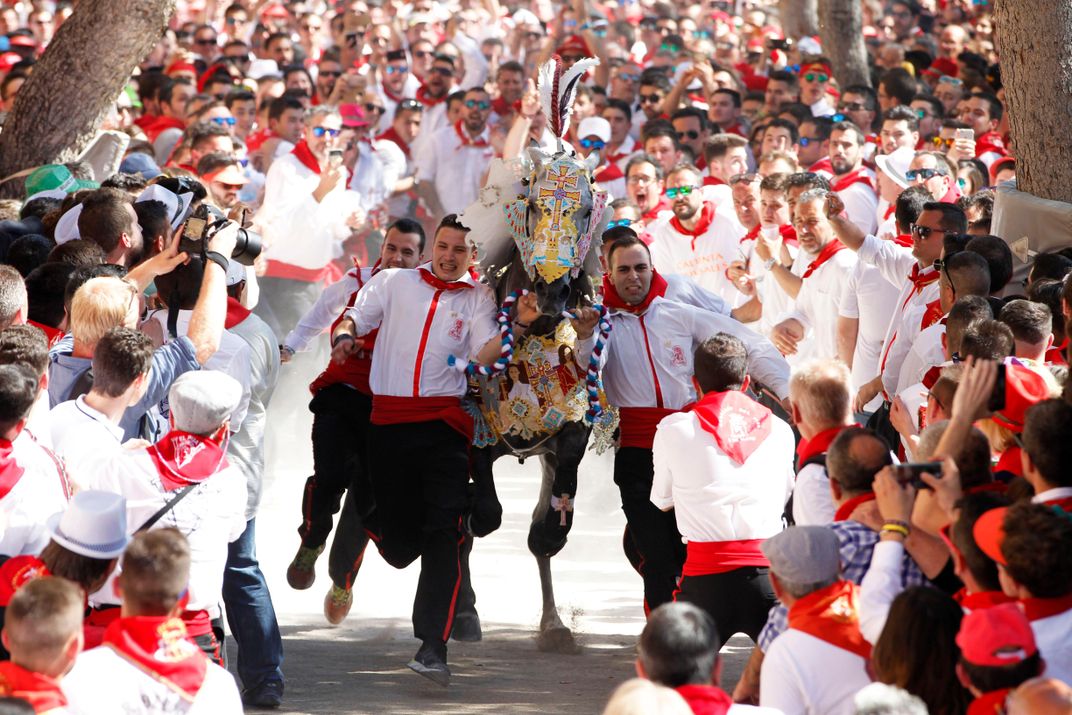
The running of the bulls is a Spanish custom known worldwide, but horses steal the spotlight in a lesser-known extravaganza in the nation. Los Caballos del Vino, or Wine Horses, take top billing in Caravaca de la Cruz, a town in southeastern Spain, during the Santísima Vera Cruz Fiesta, a celebration of the local saint that happens every year on the first three days of May. (2021 festivities are canceled due to the pandemic.) Equal parts artistic and athletic, the event is an opportunity for about 60 “clubs” to showcase the horses they spend all year breeding and training. Each club outfits its horse with a cloak embroidered with silk, gems, and gold and silver thread, often ornate enough to suit Elizabethan-era royalty or Gucci’s couture collection. In tribute to the horses that brought wine to the town’s hilltop castle , Caravaca De La Cruz Castle, centuries ago, today’s horses race 80 meters towards the fortress, gripped by two handlers on each side running along with them. The crowd congregated on the street parts before them like the Red Sea. The horse that arrives first with all four runners still holding is the winner. The day (May 2) is defined by and cherished for the unity it brings to the community, which is rare in modern life, even in a small Spanish town.
Spring Celebration, Hidrellez, North Macedonia & Turkey

In Turkey and in various parts of the Middle East, the prophet Hidir represents spring and rebirth, and the prophet Ilyas delivers rains to arid lands. According to legend, they encountered one another on Earth in early May. Their meeting symbolizes the turnover from winter to spring, a season of rebirth, and it’s commemorated each year on May 6, a day known today as Hidrellez (a fusion of their names; Ederlezi is the term modern Romani people use). It’s celebrated by the Roma in Macedonia, who identify as Turkish. A celebration of rebirth and healing, the rituals are informal and typically take place in small villages and towns near rivers or other water sources, such as the ancient city of Stip, in the center of the country, and Skopje, 50 miles east of Stip. Hidrellez customs are considered more community activities than formally organized festivals. Traditions include picking curative herbs, competing in wrestling competitions and visiting holy sites. But the highlight of Hidrellez is the customary songs—Turkish poems known as manis, which younger generations learn from their elders. Manis have their roots in ancient myth and are connected to a belief in supernatural phenomena. They pronounce curses as well as blessings, and it’s said they can predict the future.
/https://tf-cmsv2-smithsonianmag-media.s3.amazonaws.com/filer/9a/68/9a686cd6-ceae-4d63-bf9c-5fbebb7d3ee1/unesco_intangible_cultural_heritage-mobile.jpg)
/https://tf-cmsv2-smithsonianmag-media.s3.amazonaws.com/filer/fb/8b/fb8b1128-75cb-4187-b684-77622c8e250f/unesco_intangible_cultural_heritage_banner.jpg)